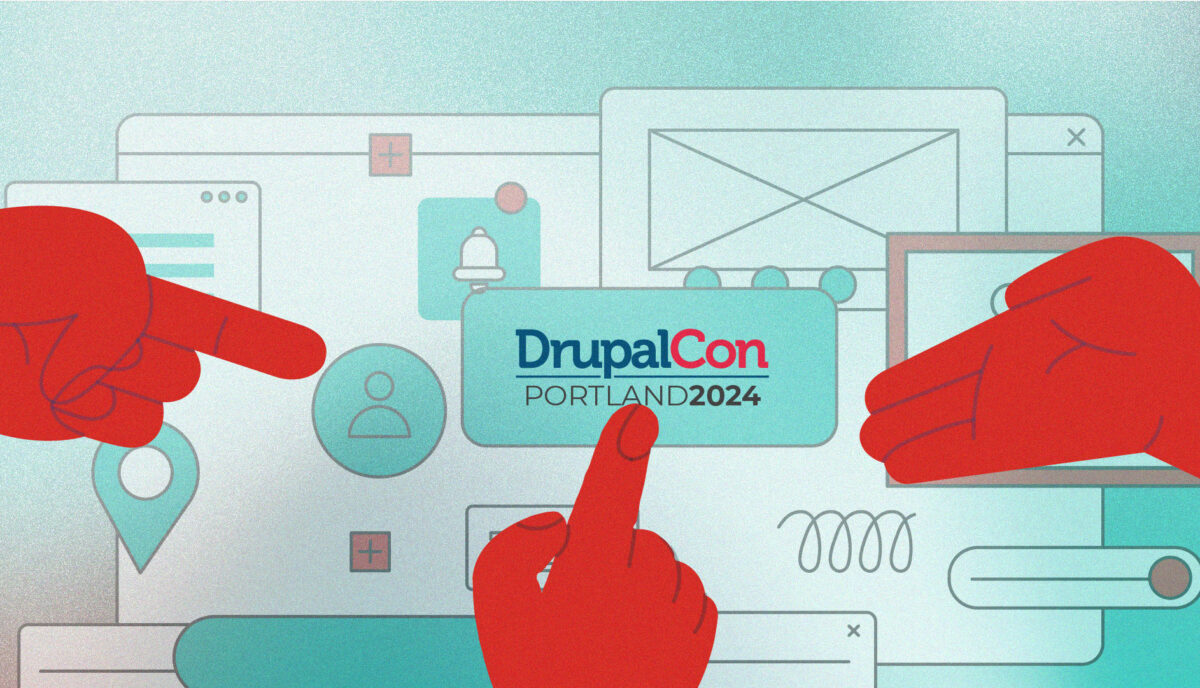10 Principles of Digital Project Management We Live By
Every digital project is unique. Goals, stakeholders, priorities and budget can all vary drastically. It’s this very fluctuation that makes project management so interesting—there’s always something new around the corner! Despite all the differences, there are some basic truths when managing a digital project that we try and follow here at Oomph. While they’re not yet etched into tablets (who has the time or strength?), they remain important tenets that we try and uphold with both our clients and our project teams.
Ask clients for honesty & return the favor
At our very first meeting with a client, we communicate the importance of honesty for a healthy and successful project. We work with our clients anywhere between three to nine months on projects and mutual trust is intrinsic to a positive outcome. You cannot build trust without honest communication.
Don’t like the design direction we’ve suggested? Tell us! It’ll come out at some point (it always does)—and it’s far more complicated to learn about it once we’ve begun development than if we had addressed it in the design phase. Likewise, expect that same honesty from us. If the client suggests functionality that is out of scope and will impact the budget—we’ll let you know. And then we’ll work with you to find the best solution for the problem we’re collectively trying to solve. As Mike Monteiro states in Design is a Job, A good client will trust your process as long as they have transparency into it…
Be personable — we genuinely care about our clients, our team, and the project
Good business is built on good relationships. This is essential for both working with a client and working with our internal project team. Excitement, enthusiasm, energy — they’re all infectious when communicated authentically. Recognize the input, the efforts, and the emotions of those you work with; observe people and whether they’re happy or not; and approach folks in a manner that suggests an awareness and understanding of them as individuals. Be human, often.
Recognize the client as a partner
No matter how smart your internal team is, there cannot be a successful project without the involvement of the client. They know their business and their clients better than we ever will and we need to appropriately listen to and weigh their ideas and suggestions. An “us” versus “them” approach is a self-fulfilling prophecy. Rather, think of your client as your teammate, occupying the same bench in the dugout. They may need some coaching along the way, but a championship isn’t won without the participation of the full team. Matching jerseys are optional.
Identify risks & how to prevent them
Every project has a potential for risk — you’re naive to think otherwise. For example, turnaround for client feedback may be at risk if you know they need to coordinate with a working group of 20 stakeholders, thus potentially throwing off the project schedule. Your job as a project manager is to anticipate those risks as early as possible and identify ways to mitigate those challenges.
And back to Tip #1 (Honesty) — communicate these risks to your client as early as possible with a clear outline of potential impact and efforts for avoidance. Paying attention to the client’s timetable and budget will be appreciated and will go a long way in establishing trust.
Be present
Isn’t it annoying when you’re talking to someone and their head is buried in their laptop or their fingers are running wild on their phone? Mindfulness is key for all project team members—client and internal. Do not hesitate to remind folks of this frequently. Attentiveness communicates respect and engagement and you can never have enough of either. Try requiring that for internal standups, team members eschew all electronic devices, giving you and each other, their full attention.
Be clear about project scope upfront but be open to discussing new ideas
A project plan is imperative — as it provides a firm understanding (for both us and the client) of what is considered “in scope” for a given project and helps to prevent the dreaded beast Scope Creep.
But what if we began to view our creep creature as an opportunity and not a liability? Every new idea that arises over the course of a project should not be immediately met with Not in scope, but rather, discuss whether it advances the project goals and objectives, and if so, what is the potential impact on budget? Then you and the client can decide whether to wait and catalogue this for a post-launch enhancement or whether to do some shifting of priorities. The web is ever evolving and as such, we need to retain a certain amount of flexibility to meet the medium.
Listening is as important as communicating (client and internal)
We often extol the value of good communication skills when talking about project management, but we can overlook the benefits of active listening. There are valuable kernels of information shared with us throughout projects — and they often have nothing to do with the project at hand. Maybe a client mentions an upcoming vacation or a colleague says something quietly about being stressed. As we develop relationships, it’s vital that we take mental notes during our conversations, capturing these communication cues. And then authentically (human again) act upon this information with follow-up questions that communicate “I hear you.”
We may work in an industry that designs online solutions, but we remain advocates for direct human interaction when achievable.
Early involvement for all
Aristotle’s principle The whole is greater than the sum of its parts
underlies the collegial synergy that drives a project to a successful implementation. While a team is comprised of a diverse group of specialists (Designer, UX Designer, Lead Architect, Web Developer, Front-End Developer, among others) it is the collective wisdom that generates the most suitably balanced ideas and solutions.
Nancy Lyons uses a great analogy in her book Interactive Project Management, comparing the web project team to an orchestra. ALL musicians must work together to achieve symphonic harmony — and we too must do the same (minus the tuxedos). Harness the power and talents of your team early in the process, regardless of when team members may be getting their hands actively dirty in the project. Brainstorming sessions should include all team members, channeling their unique perspectives for the greater good, and reinforcing their engagement and investment in the process.
Balance attentiveness with impact on project budget
Communication is HUGE, we all know this. In our successful efforts to build strong client relationships, it can be easy to think “the more communication, the better.” STOP. And beware the slippery slope of the silver tongued.
Of course we want to communicate frequently, and be attentive, and human, and honest (gosh, we’re perfect!), but we also want to remain sane AND stay within the parameters of the project budget. Set up a communication schedule at the beginning of the project that befits its scale and manage communication expectations from the get go. Another tidbit for you — try and refrain from sharing your cell number with clients. Trying to manage communication once that move is made is analogous to traversing back up to the mountain top during an avalanche. We already exist in an age where the lines of work and home are easily blurred; make sure you protect your personal (as well as the project’s budgetary) limits.
Meet in person whenever possible
We are fortunate to be able to work with clients all over the world. Email, Google hangouts, FaceTime — they allow us to conduct business conveniently across time zones with little disruption. While beneficial, we still have found no comparative replacement for the face-to-face meeting. Eye contact and body language are potent indicators of mood and intentions and while often subtle, their value cannot be underestimated during collaborative working sessions, design reviews, or key discussion points. As such, and when possible, we try and ensure some good ol’ fashioned face-time several times over the course of a project.
None of these suggestions should be earth-shattering revelations. They all fall within an intentionally humanist approach we’ve adopted here at Oomph which over time, has become a way of habit (as all good standards should). Our project managers are responsible not only for shepherding our digital solutions, but also for attending to client and team relations; and all hold tremendous value. It’s a recipe rife with respect (and alliteration!), with a little sprinkle from our kindergarten days — be sure to treat others how you’d like to be treated.
Let’s start a conversation about how we can put our principles of project management to work for you.


